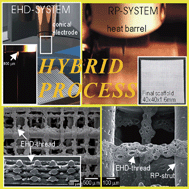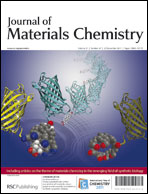A new hybrid scaffold using rapid prototyping and electrohydrodynamic direct writing for bone tissue regeneration
Abstract
Biomedical scaffolds have been widely used to regenerate various tissues and organs. One technology used for scaffold fabrication is rapid prototyping (RP), which has the advantage of easy control of the internal microstructure of scaffolds. However, scaffolds fabricated using RP technology show low resolution of struts and too smooth struts, which can deteriorate initial cell attachment and proliferation. To overcome this problem, we propose a hybrid technology combining a RP system and electrohydrodynamic (EHD) direct writing, which has been used to generate highly roughened microsized threads for enhanced cellular behavior with controllable mechanical properties. The resulting structure consists of alternating layers of microsized struts and highly roughened threads. The results of culturing osteoblast-like cells show significantly enhanced biological properties of the scaffold (approximately 2 times the cell viability and 2.5 times the bone mineralization) compared to the scaffolds fabricated using RP technology, and we believe that the combined process can be a promising method for fabricating three-dimensional biomedical scaffolds in soft and hard tissue regeneration.


 Please wait while we load your content...
Please wait while we load your content...